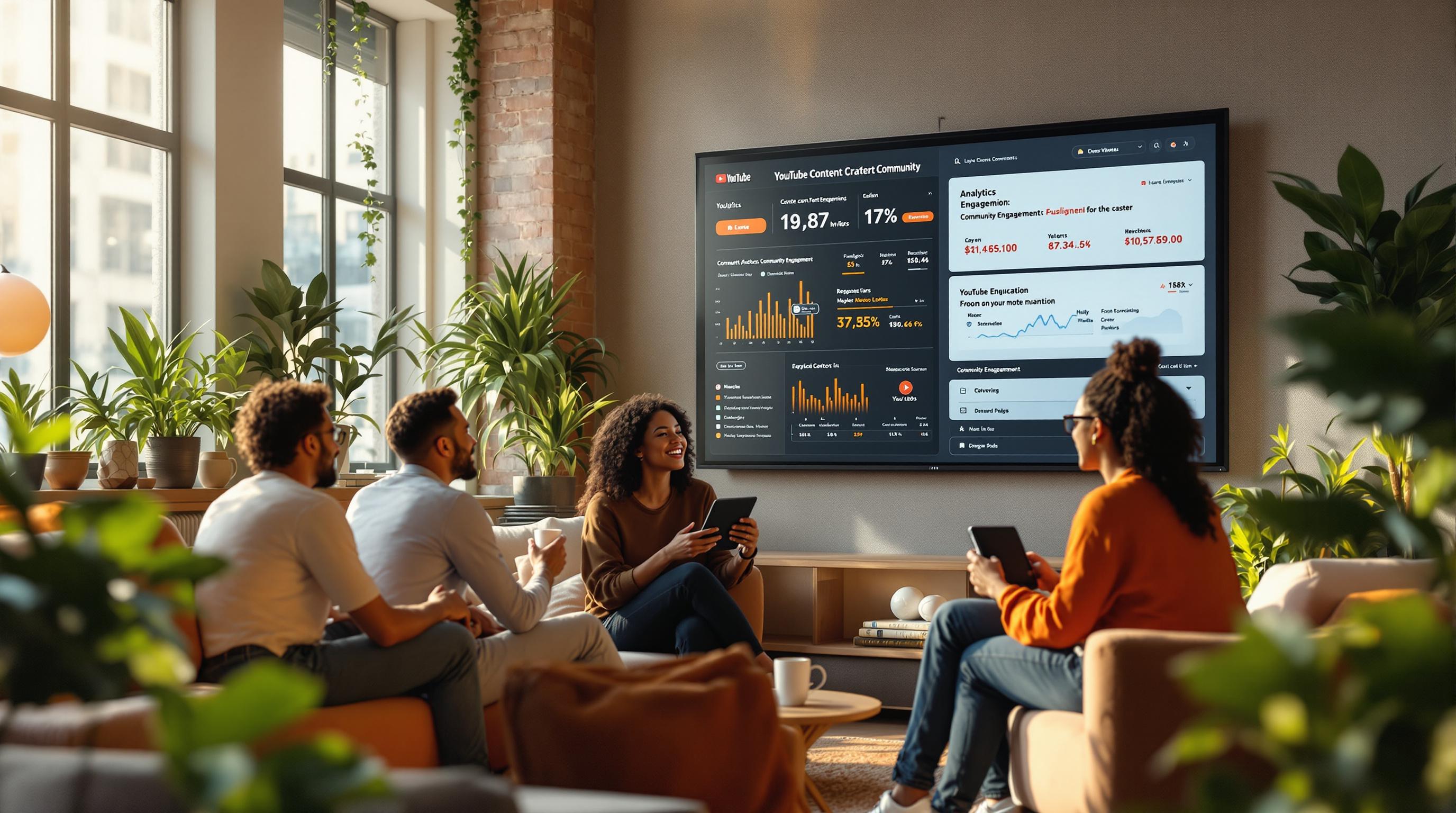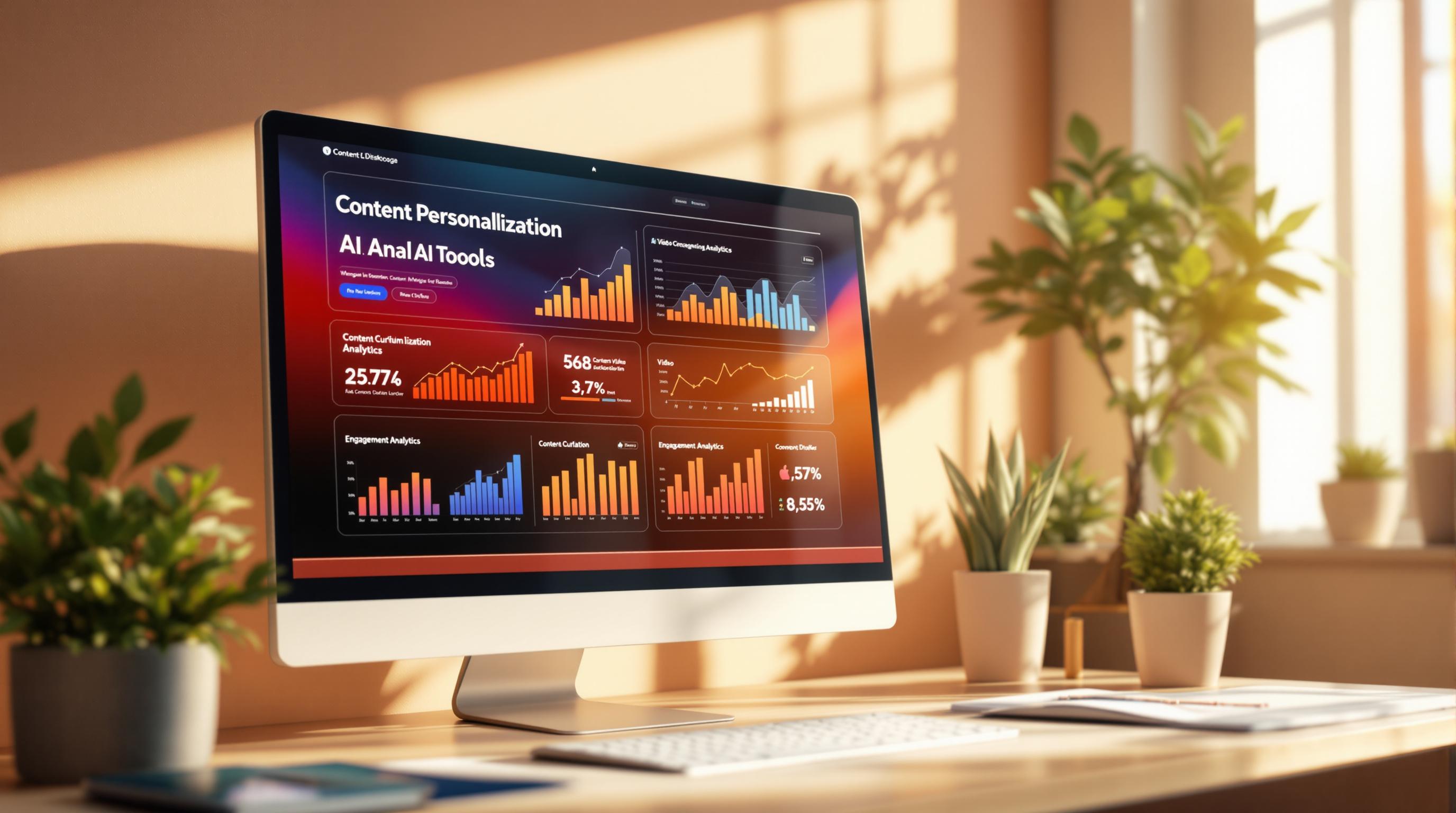Creating a consistent funnel design improves conversions and builds trust. This article highlights the best tools to simplify and unify your marketing funnel across all stages. Here’s a quick overview:
- Visual Design: Canva and Adobe Creative Suite offer tools for cohesive branding.
- Funnel Builders: ClickFunnels, Kartra, Unbounce, and Instapage help create and optimize landing pages.
- Email Marketing: Mailchimp and ActiveCampaign ensure your emails match your brand.
- Analytics: Google Analytics and Hotjar provide insights to refine your funnel.
Quick Comparison
| Tool | Primary Use | Key Features |
|---|---|---|
| Canva | Visual Design | Brand Kit, Template Locking, Smart Resize |
| Adobe Suite | Professional Design | Creative Cloud Libraries, Smart Objects |
| ClickFunnels | Funnel Building | Drag-and-Drop Editor, Templates |
| Kartra | Funnel Building | Pre-designed Templates, All-in-One |
| Unbounce | Landing Pages | A/B Testing, AI Personalization |
| Instapage | Landing Pages | Advanced A/B Testing, Personalization |
| Mailchimp | Email Marketing | Content Studio, Customizable Templates |
| ActiveCampaign | Email Automation | Segmentation, Integrations |
| Google Analytics | Analytics | Behavior Flow, Real-Time Reporting |
| Hotjar | User Behavior Insights | Heatmaps, Session Recordings, Feedback Polls |
These tools ensure your funnel design is streamlined, effective, and consistent. Read on for detailed insights into each tool.
Best Sales Funnel Software Review
1. Canva

Canva is a go-to tool for maintaining consistent visuals across all parts of your marketing funnel. With its Brand Kit, you can store your brand’s colors, fonts, and logos in one place, ensuring every design aligns with your branding.
The template locking feature helps protect your brand identity by allowing you to create master templates for each stage of your funnel. Whether it’s social media ads or landing page graphics, your brand elements stay intact.
Need to resize designs for different platforms? Canva’s Smart Resize tool has you covered. It lets you quickly adjust a Facebook ad into the perfect size for Instagram Stories, email banners, or landing page visuals.
Thanks to its user-friendly interface, Canva works for everyone - from beginners to seasoned designers - making it easy for marketing teams to create unified designs for every funnel stage.
2. Adobe Creative Suite
Adobe Creative Suite sets the bar for professional design, offering tools that ensure consistency across all stages of your marketing funnel. With Creative Cloud Libraries, teams can store and share brand assets, making it easier to maintain uniformity in every project.
Adobe Photoshop is ideal for creating polished, pixel-perfect visuals. The Artboards feature allows you to design multiple versions of assets within a single file, ensuring a cohesive look. Plus, Smart Objects let you resize elements - whether it's an email header or a billboard - without losing quality.
Adobe Illustrator specializes in scalable graphics that look sharp at any size. With Global Colors, you can update linked elements instantly, while the Symbols panel lets you create reusable design elements that sync across your project whenever updated.
Adobe XD is perfect for creating reusable components like buttons, forms, and menus, keeping your designs consistent. Its Design Specs feature provides developers with precise details, ensuring your designs are implemented exactly as intended.
Adobe Creative Cloud also offers real-time version control, so teams can track changes and avoid inconsistencies during collaboration. And with Adobe Fonts, your typography stays consistent no matter the device or platform.
Each tool in the Adobe Creative Suite plays a key role in making sure your designs remain cohesive and professional at every stage of your funnel.
3. ClickFunnels

ClickFunnels is a comprehensive platform designed to help businesses attract leads, convert them into customers, and grow effectively. With its drag-and-drop editor and pre-designed templates, creating pages is straightforward while maintaining a consistent look and feel. It also connects seamlessly with popular marketing tools, streamlining your workflow and keeping everything organized. This streamlined approach has inspired other platforms to focus on specialized features.
4. Kartra

Kartra is an all-in-one platform that provides ready-to-use templates, ensuring your branding stays consistent across every part of your marketing funnel.
5. Unbounce

Unbounce is a landing page builder designed to help businesses craft high-converting landing pages, pop-ups, and sticky bars - all without needing any coding skills. The platform uses AI-driven tools to personalize content dynamically, tailoring it to your audience. Plus, its A/B testing feature lets you try out various page versions to see what works best for boosting conversions. This makes it easier to fine-tune your landing pages and keep your marketing funnel performing at its best.
sbb-itb-a84ebc4
6. Instapage

Instapage makes it easier to create landing pages that drive results. Its advanced A/B testing allows marketers to experiment with layouts, colors, and copy while keeping the design consistent. The platform’s built-in analytics help identify which versions perform best, making data-driven decisions simpler. Plus, its personalization tools let you adjust content to fit different audiences without losing the polished look of your pages.
This efficient setup leads us to the next design tool on our list.
7. Mailchimp

Mailchimp is an email marketing platform designed to keep your branding consistent throughout your funnel. Its Content Studio brings all your brand assets - like colors, logos, and fonts - into one place. Plus, it provides customizable templates to ensure your emails and landing pages match your funnel's design.
Mailchimp works smoothly with platforms like Shopify, WordPress, Facebook, and Instagram, making it easy to maintain consistent branding across various channels. Its dashboard also connects with tools like Google Analytics and Facebook Ads, helping you track engagement across touchpoints.
Recognized in the Marketing Funnels Directory as a top tool for email marketing automation, Mailchimp stands out for its ability to maintain design consistency, even as your marketing efforts grow. With its extensive template options and easy-to-use branding tools, it’s a go-to choice for marketers aiming to deliver a unified funnel experience.
8. ActiveCampaign

ActiveCampaign is an email marketing and automation platform designed to keep your campaigns aligned with your brand. It helps ensure your emails stay consistent and engaging, maintaining your brand's identity across all touchpoints.
The platform works smoothly with tools like WordPress, Shopify, Facebook, and Google Analytics, making it easier to create a unified experience throughout the customer journey. These integrations allow you to manage everything in one place, saving time and reducing hassle.
ActiveCampaign has been highlighted in the Marketing Funnels Directory as a leading automation tool, helping teams deliver professional marketing campaigns while keeping brand consistency intact.
9. Google Analytics

Google Analytics is a powerful tool for understanding how well your funnel design is working. It offers in-depth data on user behavior and conversion trends, making it easier to identify and fix problem areas.
The Behavior Flow feature shows how users move through your funnel, helping you spot design issues that might be causing drop-offs. This data can guide tweaks to improve the user journey.
With the Goal Flow visualization, you can track specific conversion paths to see how smoothly users progress from start to finish. Key metrics like page value, exit rates, time spent on a page, and bounce rates help you identify areas where your design might be falling short.
For e-commerce, the platform’s tracking tools dive into product interactions and conversion paths. You can also create Custom Segments to analyze specific user groups based on traffic sources, device types, locations, or demographics.
The Real-Time reporting feature is especially useful for tracking immediate effects of design updates or A/B tests, ensuring your funnel remains consistent and effective.
10. Hotjar

Hotjar offers tools to analyze user behavior and improve your website's funnel design. With features like heatmaps, session recordings, and feedback polls, it helps pinpoint issues that may be affecting conversions.
Heatmaps show where users click, scroll, and move on your pages, making it easier to spot areas of interest or friction. Session recordings provide a play-by-play of user interactions, helping you understand navigation paths and hesitation points. Meanwhile, feedback polls allow you to gather direct input from users at different stages of the funnel.
Here’s what Hotjar brings to the table:
- Visual Feedback: Heatmaps highlight user engagement trends.
- Behavior Tracking: Session recordings reveal how users interact with your site.
- User Insights: Feedback polls collect valuable opinions straight from your audience.
Use these tools to analyze key pages, track user sessions along the conversion path, and gather feedback during critical moments. By acting on the insights Hotjar provides, you can fine-tune your funnel design to create a smoother, more effective user experience.
Wrapping Up
After reviewing the tools, let’s look at how to align design, development, and analytics efforts effectively. Using the right tools ensures smooth execution at every stage of your funnel.
For creating brand assets, Canva and Adobe Creative Suite are solid choices. For building funnel pages, platforms like ClickFunnels and Kartra get the job done.
Here’s a quick breakdown of tools tailored to specific funnel stages:
| Funnel Stage | Recommended Tools | Key Features |
|---|---|---|
| Lead Capture | Unbounce, Instapage | A/B testing, personalization |
| Nurturing | Mailchimp, ActiveCampaign | Email automation, segmentation |
| Analytics | Google Analytics, Hotjar | User behavior tracking, conversion insights |
These tools help ensure each stage is supported with reliable features that contribute to measurable outcomes.
For more tool suggestions and strategies, check out the Marketing Funnels Directory (https://topmarketingfunnels.com). It’s a great resource to stay informed about funnel optimization trends.
When choosing tools, keep these factors in mind:
- Integration: Tools should work smoothly with your existing systems.
- Scalability: Pick options that can grow alongside your business.
- Analytics: Look for tools offering detailed performance tracking.


